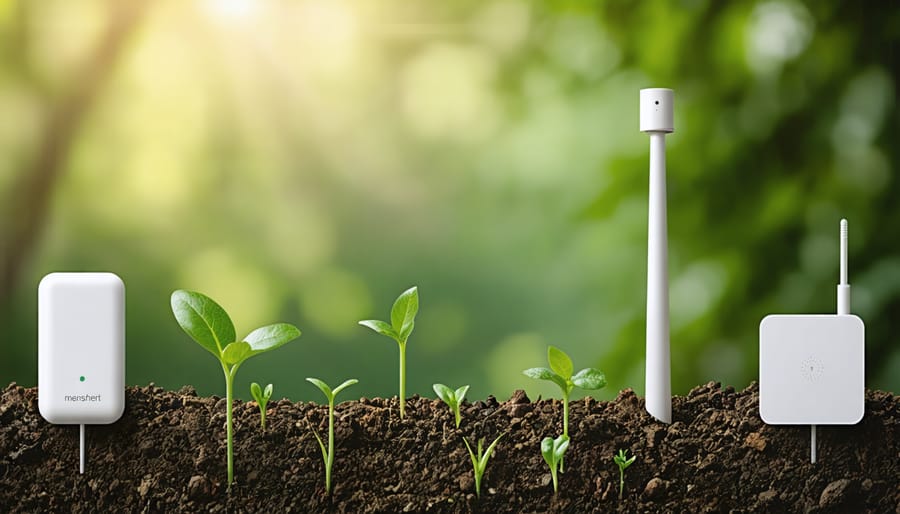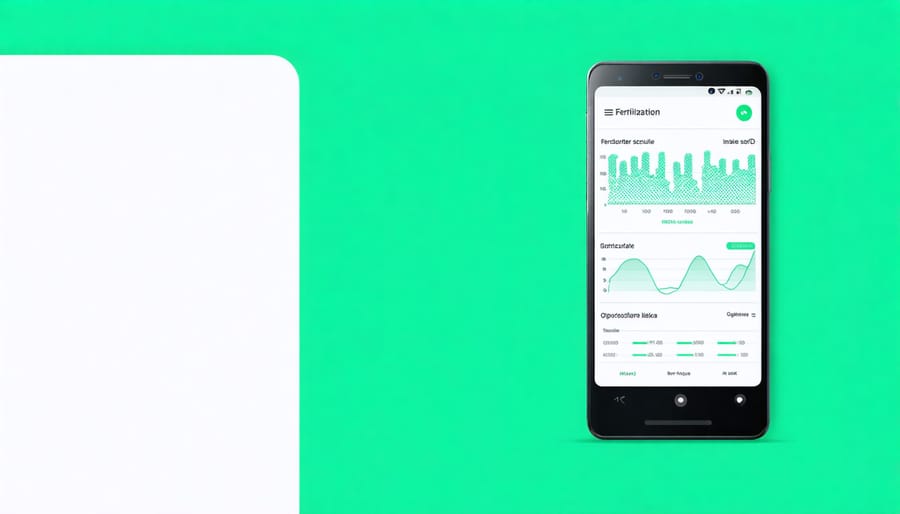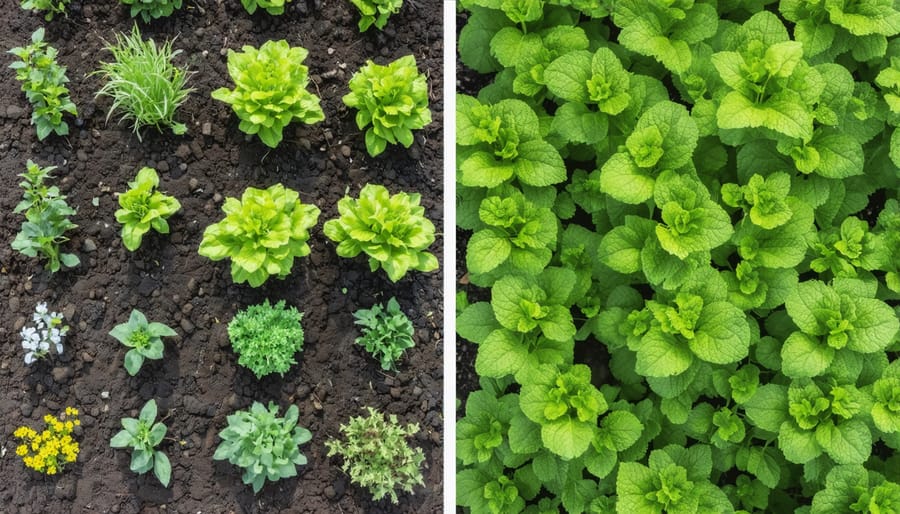Transform your backyard garden into a cutting-edge oasis with smart farming technology that does the heavy lifting for you. Modern automated systems now bring commercial-grade precision to home gardens, letting you control watering, fertilization, and soil monitoring from your smartphone. These intelligent systems reduce water waste by up to 50%, optimize nutrient delivery, and maintain perfect growing conditions without constant manual oversight.
Today’s smart garden systems combine soil moisture sensors, automated fertilizer dispensers, and weather-responsive irrigation controls to create a self-managing ecosystem that maximizes yields while minimizing resource use. Whether you’re a busy professional wanting fresh homegrown produce or a gardening enthusiast seeking to upgrade your setup, smart farming technology offers a practical solution that adapts to your lifestyle.
The real beauty of these systems lies in their accessibility – you don’t need to be a tech expert or master gardener to get started. With basic DIY skills and a weekend of setup time, you can automate your garden care and join the growing movement of smart home gardeners who are revolutionizing the way we grow food at home.
What Makes a Fertilization System ‘Smart’?
Sensors and Monitoring
Modern smart soil sensors have revolutionized the way we monitor and care for our gardens. These clever devices work tirelessly to keep track of essential growing conditions, giving you real-time insights into your garden’s health. Moisture meters tell you exactly when your plants need watering, eliminating the guesswork that often leads to over or under-watering. They’re particularly helpful during those busy weeks when you can’t check on your garden as often as you’d like.
Nutrient monitoring devices act like tiny underground laboratories, measuring important elements like nitrogen, phosphorus, and potassium levels in your soil. They can alert you through your smartphone when it’s time to fertilize, ensuring your plants get the nutrition they need without waste. Many of these sensors also track soil pH, temperature, and salinity – factors that can make or break your garden’s success.
The best part? Most modern sensors connect wirelessly to your home network, sending data straight to your phone or tablet. This means you can check on your garden’s vital signs anytime, anywhere, and make informed decisions about its care. It’s like having a master gardener watching over your plants 24/7!

Automated Control Systems
Modern garden automation systems have revolutionized the way we manage our home gardens and small-scale farms. These smart controllers act like a personal garden assistant, taking care of watering schedules, monitoring soil conditions, and adjusting fertilizer delivery automatically.
At the heart of these systems are programmable controllers that connect to your home’s WiFi network. They use real-time data from soil moisture sensors, weather forecasts, and plant growth patterns to make intelligent decisions about when to water and fertilize your plants. You can easily set up customized schedules through user-friendly smartphone apps, which also send notifications about your garden’s needs.
The scheduling technology is particularly impressive, allowing you to create zones based on different plant needs. For example, you can program different watering times for your vegetable garden versus your flower beds. Some systems even integrate with smart home platforms like Alexa or Google Home, letting you control your garden with voice commands. This hands-off approach not only saves time but also ensures your plants receive consistent care, even when you’re away.
Setting Up Your Smart Fertilization System
Choosing the Right Components
When setting up your smart fertilization system, selecting the right components is crucial for success. Start with a reliable controller unit – look for models with WiFi connectivity and user-friendly interfaces. These controllers should offer flexible scheduling options and be weather-resistant for outdoor installation.
For the fertilizer injector, consider your garden’s size and plant types. Small gardens typically work well with 1-2 gallon injectors, while larger spaces might need 5-gallon capacity or more. Choose injectors with adjustable dilution rates to accommodate different fertilizer concentrations.
Sensors are your system’s eyes and ears. Essential components include soil moisture sensors, pH monitors, and nutrient level detectors. While professional-grade sensors offer greater accuracy, there are reliable budget-friendly options for home gardeners. Look for sensors that can integrate with your chosen controller.
Don’t overlook the importance of quality tubing and connectors. UV-resistant materials last longer outdoors, and quick-connect fittings make maintenance easier. Consider installing a filter before your injector to prevent clogging and extend system life.
For beginners, start with a basic kit that includes a controller, injector, and moisture sensor. You can always expand your system later by adding more sophisticated components as you become comfortable with the technology and better understand your garden’s needs.
Remember to check component compatibility before purchasing, and choose items from reputable manufacturers that offer good customer support and warranty coverage.

Installation and Configuration
Setting up your smart farm system might seem daunting at first, but don’t worry – we’ll break it down into manageable steps that anyone can follow. Let’s get your automated garden paradise up and running!
Start by choosing a central location for your control hub, ideally in a covered area with access to power and Wi-Fi. Mount the control panel at eye level and ensure it’s protected from direct water exposure. Next, map out your garden zones – this will help you plan where sensors and irrigation lines need to go.
Install your soil moisture sensors first, placing them about 6 inches deep in areas that represent the average conditions of each zone. Make sure the sensors are firmly in contact with the soil and mark their locations with small flags for future reference.
For the irrigation system, connect your main water supply to a smart valve controller. Lay out your irrigation lines following your zone map, using UV-resistant tubing for longevity. Install smart valves at the beginning of each zone and connect them to the main controller.
Now for the “brain” of your system – programming the control hub. Start with basic settings:
– Set your location for accurate weather data
– Input your plant types for each zone
– Configure watering schedules
– Set moisture thresholds for automated watering
Download your system’s smartphone app and connect it to your home network. Most modern systems use straightforward setup wizards to guide you through this process. Take time to test each zone individually, checking for proper sensor readings and valve operation.
For fertilization integration, install the nutrient dispensers inline with your irrigation system. Program fertilizer ratios based on your plant types and seasonal needs. Start with conservative amounts – you can always adjust later based on plant response.
Remember to conduct a full system test before finalizing the installation. Run each zone through a complete cycle and monitor sensor readings for accuracy. Make any necessary adjustments to ensure optimal coverage and response times.
Benefits for Your Home Garden
Resource Conservation
Modern smart farm systems are revolutionizing how we manage resources in our gardens and small-scale farms. At the heart of this transformation is smart irrigation control, which uses soil moisture sensors and weather data to deliver exactly the right amount of water when plants need it most.
These intelligent systems dramatically reduce water waste by preventing overwatering and adjusting to real-time conditions. For example, if rain is forecast, the system automatically skips scheduled watering, potentially saving thousands of gallons annually. Moisture sensors placed at different soil depths ensure water reaches root zones efficiently, promoting healthier plant growth while using up to 50% less water than traditional irrigation methods.
Similarly, smart fertilization systems use precision technology to deliver nutrients exactly where and when plants need them. By monitoring soil conditions and plant health indicators, these systems prevent over-fertilization, which not only saves money but also protects our environment from harmful runoff. Many systems now feature automated fertigation, combining water and fertilizer delivery in precise measurements.
The real beauty of these resource-saving features is their set-and-forget nature. Once properly configured, they work quietly in the background, making intelligent decisions about resource use while you focus on enjoying your garden rather than managing it.
Plant Health Optimization
Smart farm systems revolutionize plant health by creating optimal growing conditions through automated monitoring and response mechanisms. The integration of smart soil management systems ensures your plants receive exactly what they need, when they need it.
These systems use sensors to track vital growth factors like moisture levels, nutrient content, and soil pH in real-time. When combined with automated watering and fertilization, they create a perfectly balanced environment that promotes healthy root development and robust plant growth. The result? Healthier plants and increased yields with less effort on your part.
One of the most impressive benefits is the system’s ability to prevent common plant health issues before they become problems. By maintaining consistent moisture levels, you’ll avoid both overwatering and drought stress. The precise nutrient delivery ensures your plants aren’t competing for resources, leading to stronger growth and better resistance to pests and diseases.
For home gardeners, this means you can grow more food in less space, extend your growing season, and dramatically reduce water waste. Whether you’re nurturing delicate herbs or managing a backyard vegetable garden, these smart systems help you achieve professional-level results without the need for constant monitoring and adjustment.
What’s particularly exciting is how these systems learn and adapt over time, creating increasingly optimized growing conditions based on your specific garden’s needs and local climate patterns.

Maintenance and Troubleshooting
Regular Maintenance Tasks
Regular maintenance is key to keeping your smart farm system running smoothly and efficiently. Start by checking your system’s sensors weekly – wipe them clean with a soft, damp cloth to ensure accurate readings. Pay special attention to soil moisture sensors, as these can accumulate dirt that affects their performance.
Monthly checks should include inspecting all water lines and connections for leaks or blockages. Flush irrigation lines to prevent mineral buildup, and clean filters in your water system to maintain proper flow. Don’t forget to check your system’s battery levels and backup power supplies if you have them.
Every three months, calibrate your sensors to ensure they’re providing accurate readings. This is especially important for pH meters and nutrient sensors that directly influence your fertilization schedule. Update your system’s software when prompted – these updates often include important security patches and performance improvements.
Seasonal maintenance should focus on weatherproofing. Before winter, drain outdoor water lines to prevent freezing damage. In spring, check for any winter damage and clean solar panels if your system uses them. Replace worn-out parts promptly to prevent system failures.
Keep a maintenance log to track when you perform these tasks and note any issues you encounter. This record helps identify patterns and prevents small problems from becoming major headaches. Remember, a well-maintained smart farm system provides better yields and uses resources more efficiently.
Common Issues and Solutions
Even the most reliable smart farm systems can encounter occasional hiccups. Here are some common issues you might face and their straightforward solutions:
Poor Sensor Readings
If your sensors are giving inaccurate readings, start by cleaning them gently with a soft, damp cloth. Dirt and debris are often the culprits. Also, check if they’re properly positioned and not exposed to direct sunlight, which can affect readings.
Connectivity Problems
When your system loses connection, first ensure your Wi-Fi signal is strong enough to reach your garden area. Consider installing a Wi-Fi extender if needed. Sometimes, simply restarting your router and system components can resolve connection issues.
Irregular Water Flow
If you notice uneven watering, check for clogs in your irrigation lines. Flush the system regularly and inspect filters for debris. During winter, remember to drain the system to prevent freeze damage.
Battery Issues
For battery-powered components, keep track of battery life and replace them before they die completely. Consider installing a backup power source for critical system components to prevent interruptions.
System Not Responding to Commands
When your system isn’t following programmed instructions, check your automation settings. Sometimes, conflicting schedules or incorrect time zones can cause confusion. Reset your system to default settings if needed, then reprogram with your desired parameters.
Remember, most issues can be prevented with regular maintenance and monitoring. Keep a maintenance schedule and address small problems before they become bigger challenges.
Smart farm systems represent an exciting frontier in modern gardening and home agriculture, making it easier than ever to grow your own food and maintain a thriving garden. By implementing these innovative solutions, you can transform your gardening experience from a time-consuming chore into an efficient, rewarding hobby that produces better results with less effort.
Throughout this guide, we’ve explored how automated irrigation, smart sensors, and integrated control systems work together to create an optimal growing environment. These technologies not only save time and resources but also help you make data-driven decisions about your garden’s care. Remember, you don’t need to implement everything at once – start with basic automation and gradually expand your system as you become more comfortable with the technology.
The benefits of smart farming systems extend beyond convenience. You’ll conserve water, reduce fertilizer waste, and potentially increase your yield while maintaining a more sustainable garden. Whether you’re a busy professional with limited time for gardening or an enthusiastic grower looking to optimize your results, smart farm systems offer solutions that adapt to your needs and lifestyle.
Take the first step today by assessing your current garden setup and identifying areas where automation could make the biggest impact. With proper planning and implementation, you’ll be well on your way to enjoying the future of gardening right in your own backyard.
